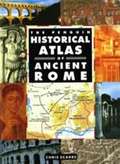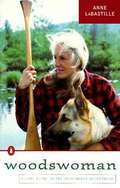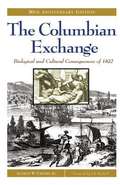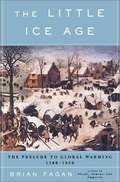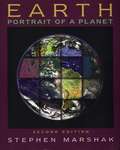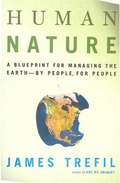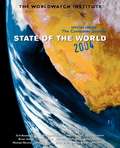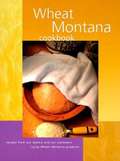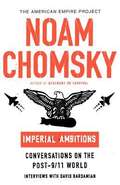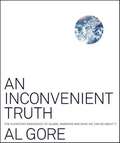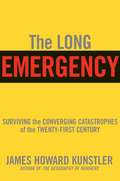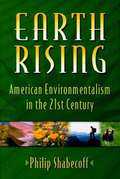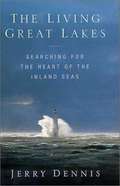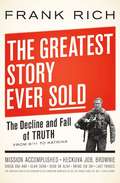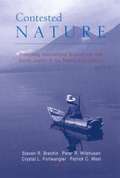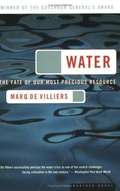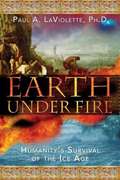- Table View
- List View
What's Inside Shells
by Richard Manning Angela RoystonWhy does a sea urchin have sharp spines? What does a tortoise look like inside his shell? How can you tell how old an oyster is? Take a look! What's Inside? is a fascinating new series that looks beneath the surface of everyday things and explains how and why they work as they do. With a unique combination of vivid photography and colorful illustration, What's Inside? peels away the outer layers to reveal an exciting world for children to explore.
The Penguin Historical Atlas of Ancient Rome
by Chris ScarreThe Penguin Historical Atlas of Ancient Rome is an introduction to the Roman Empire based on maps.
Woodswoman
by Anne LabastilleA charming memoir in which the author tells about building her own log cabin, surviving harsh winters, living affably with nature, and thoroughly enjoying and beautifully describing this part of her life.
The Columbian Exchange:Biological and Cultural Consequences of 1492, 30th Anniversary Edition
by Alfred W. CrosbyA closer look at the first contacts between European and American peoples and the long-term cultural effects of that encounter in both Native American and Old World European societies.
Silver
by Hilma WolitzerPaulie and Howard Flax have been married almost twenty-five years when she decides to leave him-before the mockery of a silver-anniversary party, "before Hallmark unfurled the tinfoil in a roll of thunder." Their circumstances have never been ideal. Paulie was pregnant when they married, Howard has been unfaithful, and they both had to defer their dreams for the sake of domesticity. Paulie, who writes a household-hints column, had once intended to be a poet, and Howard reluctantly gave up the high life of a jazz musician to run a recording studio. Middle age has softened their bodies and muted their passion. On the eve of Paulie's defection, Howard suffers a significant heart attack and the belated discovery that he truly loves her. He decides to end his affair with sexy, tenacious Janine and devote himself to restoring his marriage. But soon after his recovery, Paulie moves out of their Long Island home into Manhattan, where she encounters surprising new adventures of the mind and heart. Howard remains in the suburbs, inventing strategies to win her back, alternately aided and impeded by their grown son and daughter. At the same time, he tries to come to terms with his newly evident mortality. Told in both Paulie's and Howard's voices, Silver is the deeply affecting story of their struggle to find the best way to live-together, or apart.
The Little Ice Age
by Brian M. FaganThe Little Ice Age, the most significant climate event of the last millennium, was sandwiched between two warm spells-- the Medieval Warm Period, which lasted from about 900 to 1300 AD, and the present global warming, which began in about 1850. Although climatologists long suspected the broad outlines of these periods, only within the past decade have they developed an accurate picture of climate conditions in historical times. They can now determine yearly average temperatures and rainfall, the times and magnitude of volcanic eruptions, and even how brightly the sun shone centuries ago. This book focuses on the weather, farming and the fishing and exploring of the north Atlantic.
Earth: Portrait of a Planet (second edition)
by Stephen MarshakIntroductory geology text. This book is extremely well written and very easy to understand.
Human Nature: A Blueprint for Managing the Earth-By People, for People
by James S. TrefilTrefil, a leading scientist, is certainly qualified to tackle the controversial, timely topic of how humans ought to affect the planet they live on. He argues that from the dawn of an agricultural society, man has always engineered nature to suit his needs. And because we're the only form of life with the ability to move mountains (as much literally as metaphorically), there's no rational reason not to manage the environment
State of the World 2004
by Linda StarkeIt focuses on consumption-one of the most central and also one of the most neglected elements in the global search for a sustainable future.
Wheat Montana Cookbook: Recipes From Our Bakery and Our Customers Using Wheat Montana Products
by Wheat MontanaFrom the book's back cover: You've enjoyed their famous wheat products for years. Now the folks at Wheat Montana share some of their favorite recipes from the Wheat Montana Bakery and Deli in Three Forks, Montana, their home kitchens, and their loyal customers. Learn how to make pillowy loaves of bread, cinnamon-sweetened rolls, robust chili, flavor-packed muffins and cakes, and much more using the hearty, healthy wheat and wheat products grown and developed on Wheat Montana Farms. This book presents the endless epicurean possibilities of wheat- the staff of life. Wheat Montana's Natural White® flour, Bronze Chief and Prairie Gold whole wheat flours, wheat berries, and 7-grain mix all flavor the recipes collected here-from soups to salads, biscotti to biscuits. [You won't want to miss Adah Horne's Quick Oatmeal Bread or Heidi Lutgen's Strudel. Yumm!]
Imperial Ambitions: Conversations on the Post-9/11 World
by Noam Chomsky David Barsamian[From the book cover] Timely, illuminating, and urgently needed, this volume of interviews conducted by award-winning radio journalist David Barsamian features Noam Chomsky discussing U.S. policies in the increasingly unstable post-9/11 world. In these exchanges, appearing for the first time in print, Chomsky offers his frank, provocative, and informed views on the invasion and occupation of Iraq, the doctrine of preemptive strikes against so-called rogue states, and the growing threat to international peace posed by the U.S. drive for domination. In his inimitable style, Chomsky also dissects the propaganda system that fabricates a mythic past and airbrushes inconvenient facts out of history.
An Inconvenient Truth: The Planetary Emergence of Global Warming and What We Can Do About It
by Al GoreOur climate crisis may appear to be happening slowly but in fact it is happening very quickly, and has become a true planetary emergency.
Límites Socioculturales de la Educación Ambiental (Acercamiento desde la experiencia cubana)
by Carlos Jesús Delgado DíazEs evidente que el progreso científico-tecnológico, el bienestar de las sociedades industrializadas y el deterioro del medio ambiente se encuentran profundamente relacionadas. Al minarse las bases de los ciudadanos, la preocupación social por lo ambiental se ha manifestado como una institución social de ese vínculo con la naturaleza demandando una nueva educación que incluya la reflexión y modificación de su relación material con el mundo.
The Long Emergency
by James Howard KunstlerKunstler discusses the implications of peak oil, where oil production will eventually start to decrease as most of the easily-accessible oil has been used already. He gives some historical background and then discusses various proposed alternatives to oil and natural gas for providing transportation and electricity. He is skeptical that anything will be able to replace the abundant supply of energy that has been supplied by oil, with the possible exception of nuclear energy for electricity, and believes that the age of globalization will come to an end with declining standards of living. He discusses what he sees as the implications for different parts of the country and the world, each having their unique situations.
Earth Rising: American Environmentalism In The 21St Century
by Philip ShabecoffA general history of environmentalism in the United States.
Who Cares? I Do
by Munro LeafWho cares if people leave trash on the sidewalk, parks, roads or anywhere? Author Munro Leaf tells why we should all care.
The Living Great Lakes: Searching for the Heart of the Inland Seas
by Jerry DennisIn an effort to deepen his understanding of the Great Lakes, the author sails on a yacht from the upper reaches of Lake Michigan, through the lakes and the Erie Canal, down the Hudson and up the Atlantic coast to Maine. Along the way he encounters life-threatening squalls, meets a gallery of colorful characters, and reflects upon the past and future of the inland seas. In a series of asides he describes shipwrecks, historic battles, and ecological challenges.
The Greatest Story Ever Sold: The Decline and Fall of Truth From 9/11 to Katrina
by Frank RichA step-by-step account of how skillfully the White House has built its house of cards, to consolidate its power at any cost.
Contested Nature: Promoting International Biodiversity and Social Justice in the Twenty-First Century
by Patrick C. West Crystal L. Fortwangler Peter R. Wilshusen Steven R. BrechinThis book contends that effective biological conservation and social justice must go hand in hand.
Water: The Fate of Our Most Precious Resource
by Mauq De VilliersOverview of past, present, and potential future problems endangering the world's water supply. Index and Notes not included.
The San Francisco Earthquake
by Max Morgan Witts Gordon Thomasthe book deals with the earth quake in San Francisco in 1906. Itt shows how folks reacted, what people did and the corruption in city gogvernment. it is fascinating reading, hard to put dowsn.
Snow
by P. D. Eastman Roy MckieFrom the book: Snow! Snow! Come out in the snow. Snow! Snow! Just look at the snow! Come out! Come out! Come out in the snow. ... Picture descriptions add to the enjoyment of this book.
Earth Under Fire: Humanity's Survival of the Ice Age
by Paul A. LavioletteAnother book in a series of books on quantum physics exploring the construct of our universe. this book covers the coming galactic changes.
Why Greenland Is an Island, Australia Is Not, and Japan Is Up for Grabs
by Joyce DavisFrom the book: Any geographer will tell you that a map is but one of many tools used in the field, yet every geography book on the market tries to teach geography simply by having you identify Belize on a map or memorize the capital of Idaho. While the where is important, it is useful only for trivial reasons, and once national boundaries change or disappear, such as we've recently seen in the former Yugoslavia, the information is all but useless. In Why Greenland Is an Island, Australia Is Not-and Japan Is Up for Grabs, Joyce Davis tells you the why behind the where, offering one of the most interesting and useful books on geography currently found on the market. In Why Greenland Is an Island you will discover a clear method of approaching any geographical dilemma you might face. Through six simple steps Joyce Davis shows not only how to gather geographical information about any region, but also how to understand other aspects of the region seemingly not related to geography. You will also gain a solid background in basic geography skills, and will even touch base on what the capital of Idaho is and learn how to read a map. If you're tired of geography books that leave you feeling more helpless than when you first opened them, then it's time to get your bearings and read Joyce Davis's Why Greenland Is an Island now. Joyce Davis is a teacher of geography and former head of the history and geography departments at the Grace Church School in New York City. An originator of the geographic curriculum there and founder of the school's annual "geography bee," she currently lives 74 degrees west longitude and 40.5 degrees north latitude, also known as New York City.

